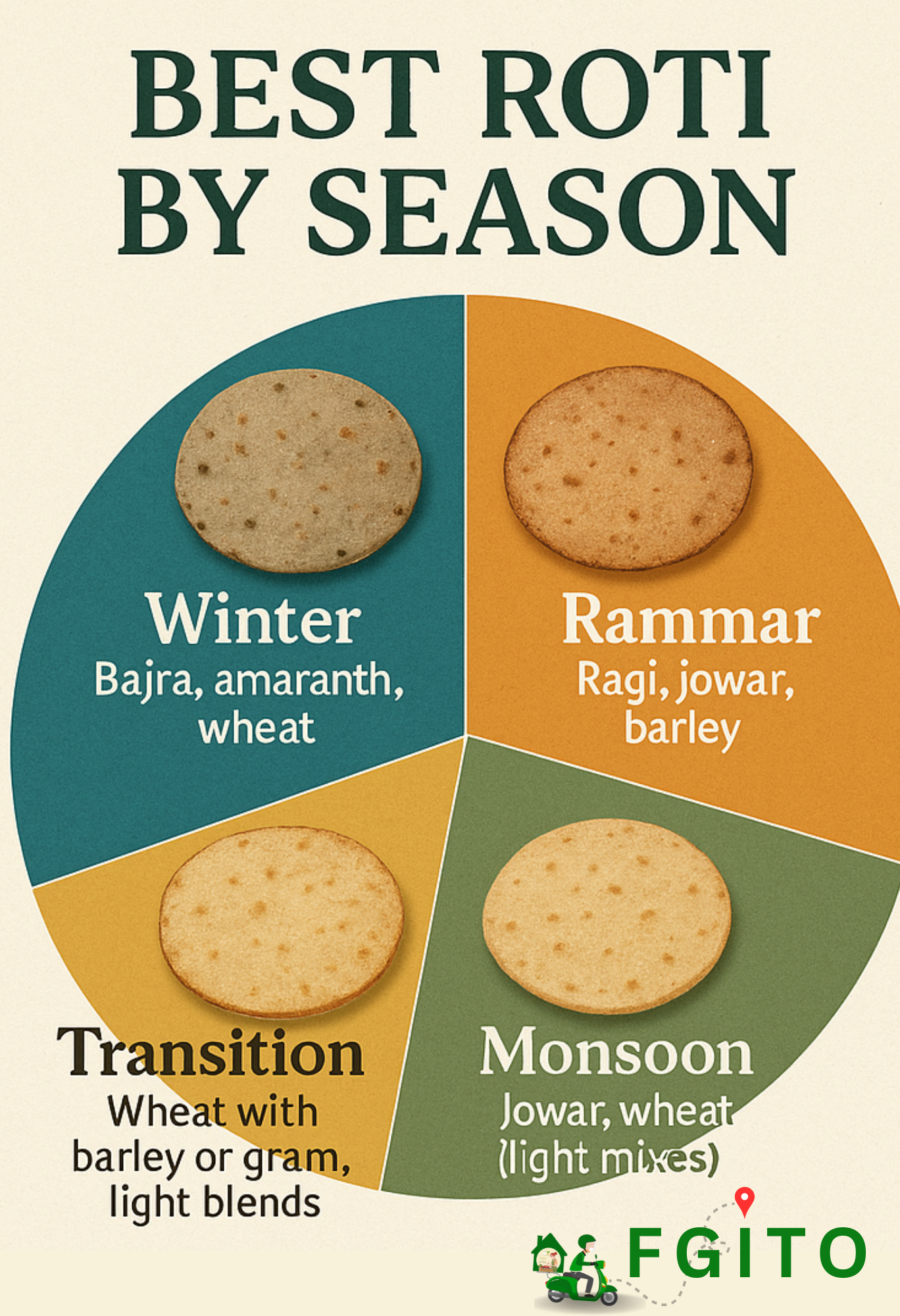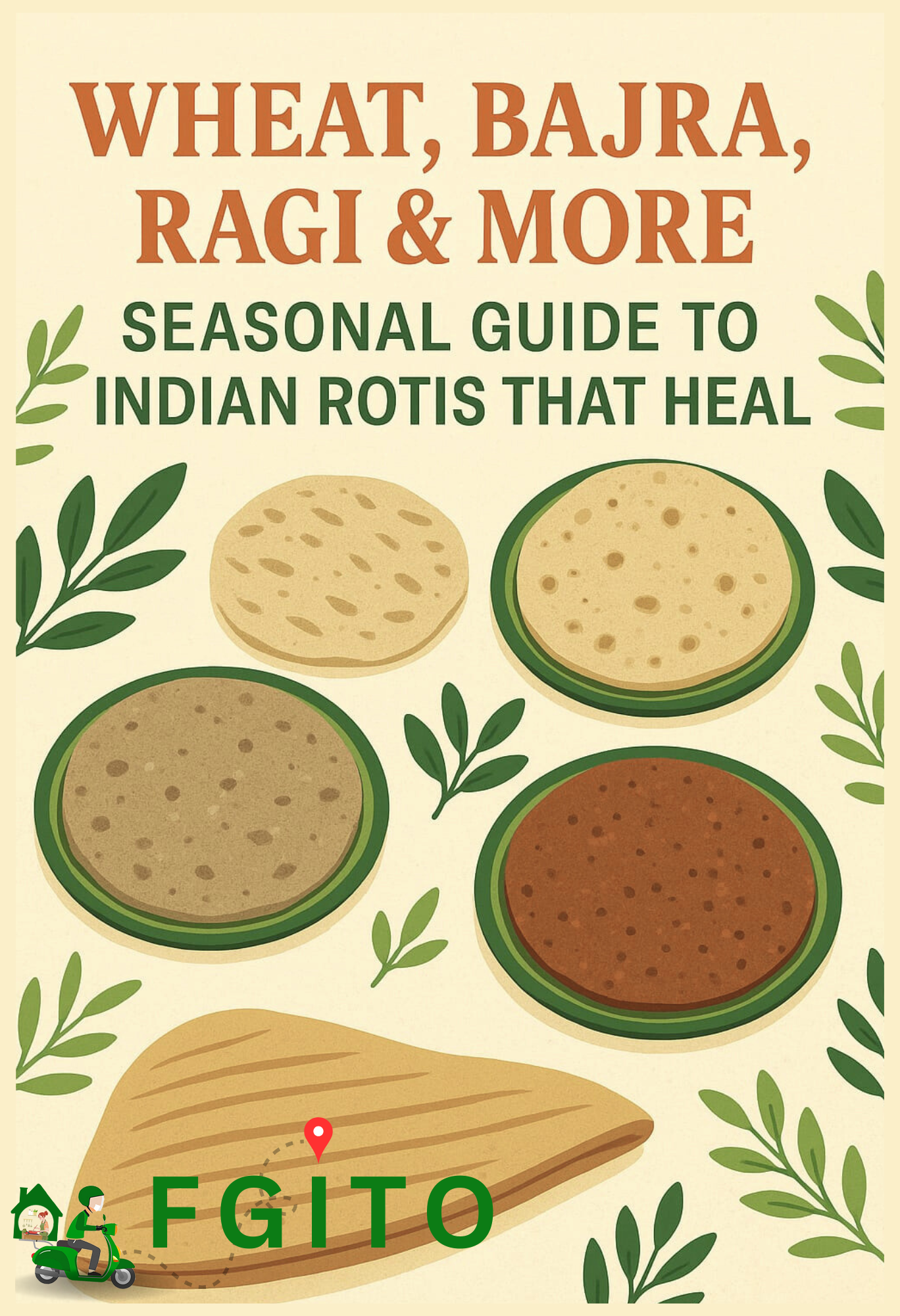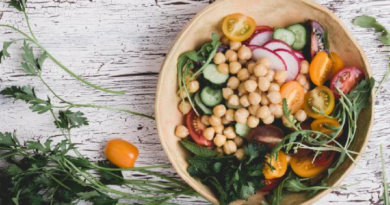Wheat, Bajra, Ragi Rotis & More Guide: What to Eat, When & Why
Still eating the same wheat roti all year round? You might be missing out on what your body truly needs.
In Indian kitchens, rotis are not just fillers—they are food with function. Just as we change our clothes with the season, our rotis too should evolve. The truth is, different grains serve different purposes based on climate, digestion, and your body’s unique needs. Yet most of us continue to default to wheat chapatis, missing out on nature’s seasonal blueprint.
Whether you are fighting winter fatigue, summer sluggishness, or monsoon digestion dips, the answer might lie in your flour box. Understanding what to eat, when, and why can turn your daily roti into a health ritual. This guide explores wheat, bajra, ragi, jowar, and more—explaining which flour suits which season, how to blend them wisely, and what tips ensure your rotis truly nourish you.
Let’s decode what flour rotis to eat, when, and why—so your daily roti becomes more than a habit; it becomes nourishment with intention.

The Big Four Flours and Their Benefits
India’s flour legacy is as diverse as its dialects. While wheat remains the most used, alternative flours like bajra, ragi, and jowar each offer unique advantages when eaten in the right season and combination.
Wheat (Gehu)
- When to Eat: All year round
- Why: It’s versatile, neutral, and easy to digest.
- Benefits: Rich in complex carbs and moderate protein, wheat rotis keep you full without overburdening your system. Great for those with stable digestion and as a base for mixing in other grains.
Bajra (Pearl Millet)
- When to Eat: Peak winters
- Why: It has a heating effect on the body.
- Benefits: High in iron, magnesium, and insoluble fiber. Excellent for those with joint stiffness, winter fatigue, or poor circulation. Adds bulk to meals and warms you from within.
Ragi (Finger Millet)
- When to Eat: Summer mornings or transitional seasons
- Why: Naturally cooling
- Benefits: Loaded with calcium and antioxidants. It curbs sugar cravings and balances hormones. Ideal for women, growing children, and those with bone issues or high stress levels.
Jowar (Sorghum)
- When to Eat: Late summer to monsoon
- Why: Light on the gut yet nutritionally dense
- Benefits: Gluten-free, high in fiber, and great for gut health. Especially useful for people with diabetes or gluten sensitivities.
Also Read: Chapati vs. Rice: The Soft Power Battle in Indian Kitchens
Mixing It Up: Why Flour Blends Matter
Our ancestors knew what modern nutrition science is rediscovering—flour blends offer balance. Mixing wheat with bajra, or ragi with jowar, helps balance the heating and cooling properties of flours.
Some smart mixes:
- Wheat + Bajra: Great for winter stamina
- Ragi + Jowar: Perfect for summer gut health
- Wheat + Barley: Excellent in transition seasons
These combinations diversify nutrient intake, avoid digestion fatigue, and keep your taste buds engaged.
Note: Always check for allergies or sensitivities before switching flours. Start with small quantities—your gut loves gradual changes, not surprises.
Seasonal Flour Guide
Here’s a quick cheat sheet to help you align your rotis with the rhythm of nature:
| Season | Flours to Favor |
| Winter | Bajra, amaranth, wheat |
| Summer | Ragi, jowar, barley |
| Monsoon | Jowar, wheat (light mixes) |
| Transition | Wheat with barley or gram, light blends |
Pro Tips: How to Eat Them Right
- Pair smart: Use ghee or sesame oil with heavier flours like bajra and ragi to aid digestion.
- Add spices: Ajwain, hing, or jeera help make heavier rotis easier on the gut.
- Go local: Source fresh, stone-ground flours. The flavor and nutrient quality are unbeatable.
- Don’t overdo it: Millets are powerful but need balance—rotate, don’t repeat daily.
Final Thought
The rotis you eat aren’t just a base—they’re a choice rooted in wellness, season, and centuries of Indian wisdom. So why stick to one, when you can switch, mix, and nourish with purpose?
At FGITO, we ensure this wisdom reaches your plate. Our meals use seasonal grains and spices sourced from local kitchens, thoughtfully prepared to provide your body with the right balance of taste and nutrition—because your health isn’t one-size-fits-all, and neither is our food.




